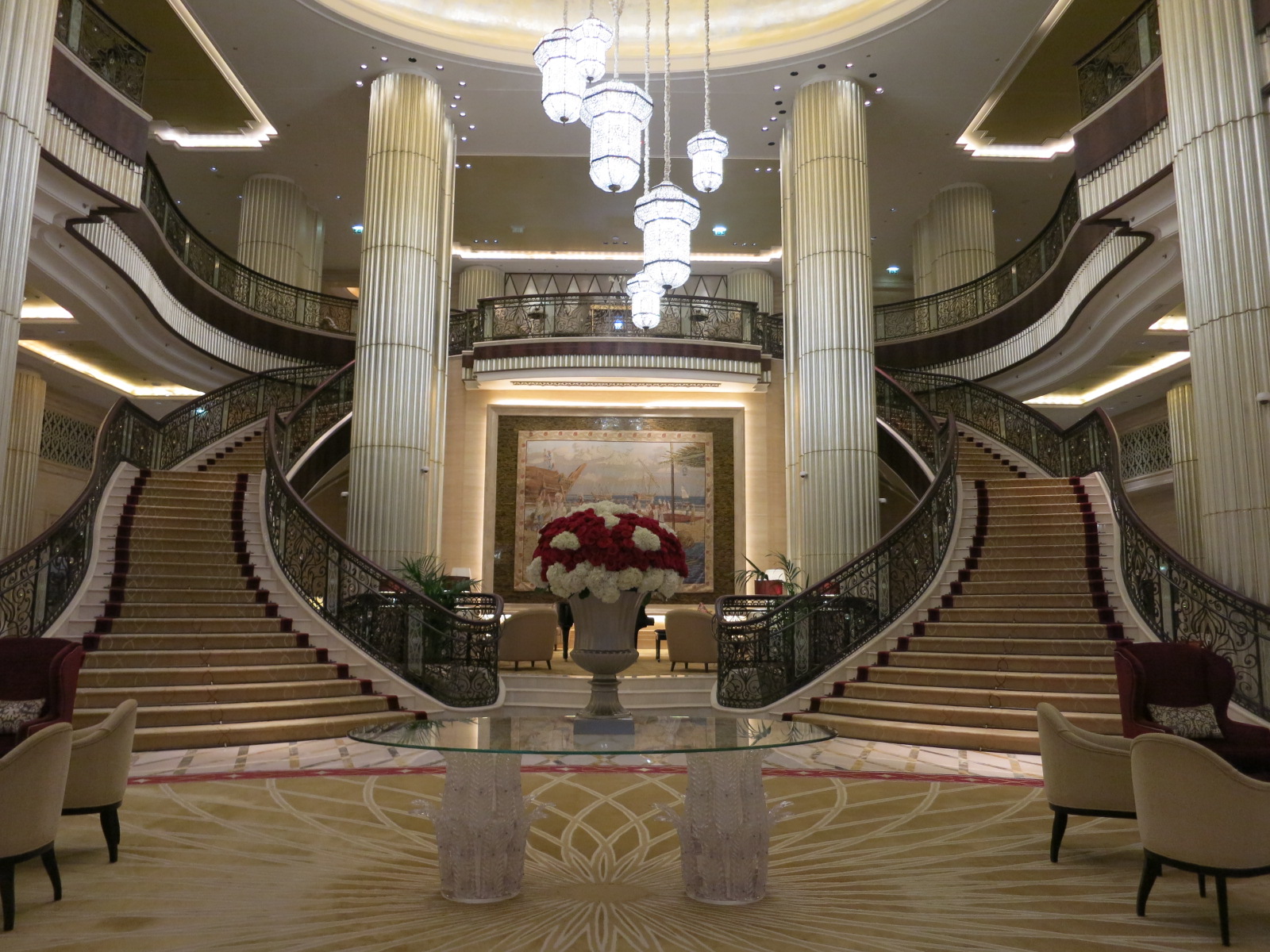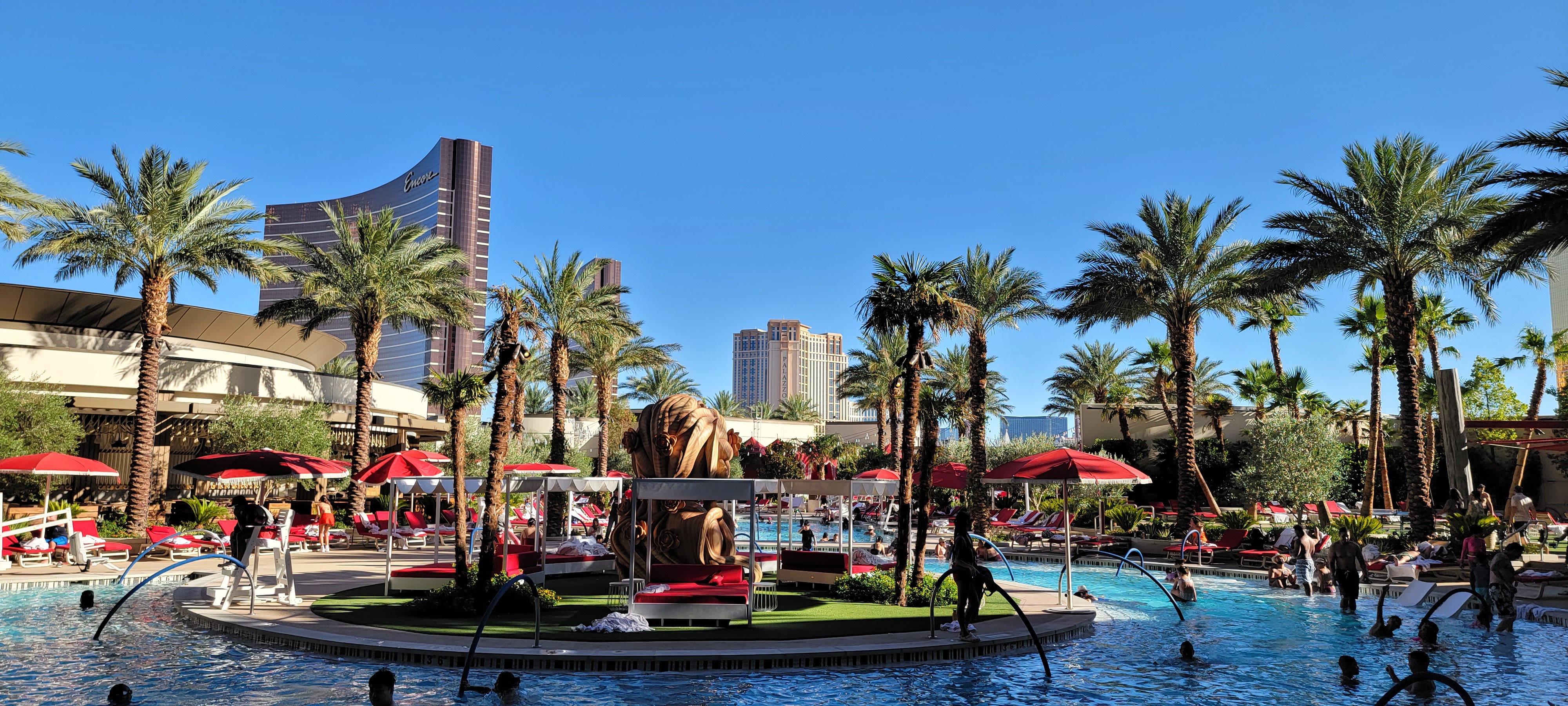Sean O’Neill compares the sizes of each of the major hotel chains, and their growth rates over the past five years.
Marriott Bonvoy (inclusive of former Starwood members) is the largest program while Hilton Honors has been growing quickly and catching up. Accor’s loyalty program – which is newer than the others – is small for the chain’s size. And while World of Hyatt is the smallest among these 7 hotel groups, it hits substantially above its weight, something that’s true both for program membership and for its co-brand credit card deal.
| Chain | # Members | 5 Yr Growth | Notes | |||
| Accor | 89,000,000 | 40% | Over 4 years | |||
| Choice | 60,000,000 | 54% | ||||
| Hilton | 173,000,000 | 110% | ||||
| Hyatt | 42,000,000 | 110% | Over 6 years | |||
| IHG | 115,000,000 | 15% | ||||
| Marriott | 192,000,000 | 60% | ||||
| Wyndham | 105,000,000 | 78% |

St. Regis Abu Dhabi
There’s a couple of limitations to this data.
- We don’t know what counts as a member. This isn’t an active member (however a given chain defines that, such as some activity in their account in the last 12, 24, or 36 months). It’s total members in their data file. And some chains pay purge data at some point.
- Available data for some chains is limited, for instance Hyatt’s 2018 member number isn’t available so their growth rate is calculated back to 2017.

Park Hyatt New York
It’s not just Hyatt’s growth that’s notable but also their program size relative to footprint. On a per-hotel and per-room basis they’re larger than the other chains.
For IHG, the pace of enrollments picked up markedly after the rebrand of IHG One Rewards and introduction of a new elite status program in 2022.
Meanwhile, O’Neill notes that “Marriott International says that Marriott Bonvoy has the lowest loyalty charge-out rates in the industry.” Hotel owners pay the lowest fees for program members that stay. That was a key announced goal of late CEO Arne Sorenson, after the chain acquired Starwood and with the introduction of the new Bonvoy program – and was a reason I expected that the deal would mean points devaluation for members.

Marriott’s Al Maha Desert Resort
However it’s worth noting that hotels don’t have to pay as much for ‘the points’ awarded to guests because the points in turn don’t cover the full stay at the best hotels. Unlike Hilton and Hyatt, members pay the hotel directly for resort and destination fees when redeeming their points.
Merely joining a program and being in a member data file is just the ability of a chain to market to a member. And the value of a member on each chain’s donor file (their ability to monetize the member) will be different.
- Hilton is everywhere, but delivers only modestly on the earn side of the program and average value in redemption. Elite benefits are extremely weak (no guaranteed late check-out, and hotels keeping top elites out of available suites is entirely consistent with program rules). Many hotel properties overdeliver relative to their obligations, of course.
- Marriott is everywhere, and on paper has a strong program for their best and highest-spending guests, but there’s tremendous variance in on-property delivery of benefits and their published upgrade benefit lags Hyatt and IHG.
- IHG has a limited number of hotels in premium categories, and many of their franchised lower-end properties need to be kicked out of the brand. However it’s a reasonable earn and burn program (not nearly as good as it used to be) and they finally have elite benefits which on paper really shine – like clearly spelled out breakfast benefits for Diamonds and the ability to confirm suites 14 days in advance out of revenue inventory.
- Hyatt doesn’t have the footprint of Hilton, IHG or Marriott and so it has to be more rewarding for its best customers. The highlight of the program is its top elite tier, which is unmatched in delivering confirmed suites at booking (and offers a dedicated concierge at 60 status nights, only Marriott offers something similar – at 100 nights and $23,000 spend).

Hilton’s Conrad Bora Bora

Hilton, Conrad and Crockfords Main Pool, Las Vegas
About half the size of Hyatt, and more of a coalition program that smaller brands can join rather than operating their own program, I really wish I had more of an opportunity to engage with GHA Discovery which awards top tier Black status after staying at just 3 brands (which can be accomplished in 3 nights in some cities).

Park Hyatt Sydney
I do wish Hyatt had a solution for small town America, and more full service properties. I also wish they had a higher elite bonus for stays. But I do very very well as a World of Hyatt member, generally confirming suites in advance whenever I travel with my wife and daughter.


What’s impressive to me in this simple data set is that it reminds us just how big IHG and Wyndham are. Because the frequent traveler community is largely dominated by people looking for disproportionate value at aspirational properties, the mentions of them are drowned out and someone who just read blogs or FT would think they were small. But their footprints are huge, and they’re workhorse programs for many people, especially IHG with its truly global coverage.
Thanks for the really nice summary!
Based on other threads, I’m sure the comment section will have some strong opinions. Important to note that everyone’s travel circumstances are different and depending on that one program may be better for someone’s situation but worse for someone else’s. Articles like this are especially great for people just starting out who are trying to learn where to put their time, money, and loyalty in.
Me personally, I am Hilton Diamond for the first time ever this year and I’m excited to see what comes of it!
@L: Don’t set your bar to high as a Hilton Diamond. Lots of luck finding almost any Hilton properties in the U.S. with an Executive Lounge. Upgrades are 50-50 at best. Everything else – as stated in the article – is a t the discretion of the individual property.
The point earnings are good, and the promotions aren’t bad. But in the end, it may not be the elite experience you might feel you deserve.
@L: Diamond usually gets you few substantial upgrades in the US, however if you travel in Mexico, Columbia, or Brazil, it is an entirely different experience. I visited all three several times last year and was upgraded to a suite or best available every time. Breakfast is always included and in Brazil, a very late checkout was always offered. As mentioned, lounges are rare in the US and of those most are uninspired.
@TravelWarr & @Jay —
Thanks for the heads up guys! Good to know to have my expectations low.
I’ve never had any “elite” status before (closest being Hilton gold last year) so it’ll be easy to expect nothing and be pleasantly surprised if I get do something — worse to come worse even the small quality of life things like free reserved Diamond parking I’ve seen at some locations would be a nice touch.
I do plan to travel internationally more moving forward so maybe some better benefits abroad as mentioned 🙂
With such a lackluster evaluation, it has got to be disheartening to self-anointed “travel gurus” that folks believe their own experiences and keep flocking to Hilton, such that at their current relative rates of growth Hilton Honors should overtake BonVoy as the largest program within the next 5 years, while World of Hyatt’s tiny footprint problem will persist.
It is also interesting that, according self-anointed “travel gurus”, the reason Hilton Honors is even competitive at all is that many Hilton hotels “overdeliver relative to their obligations, of course“, while the reason World of Hyatt fails to deliver is always that “many Hyatt hotels play games with suite/award availability/inventory/etc.” Got it?
Cahn’t make that stuff up!”
Hmmmmm. An intriguing parallel can be drawn between the realities of travel loyalty programs and the Wells Fargo fake accounts scandal. Just as less than 2% of loyalty members in the travel industry are active travelers (those who travel more than 2 nights per year), Wells Fargo’s scandal involved the creation of millions of unauthorized accounts. This similarity lies in the inflated numbers – a facade of high enrollment or participation that masks the underlying lack of genuine engagement.
In the case of loyalty programs, a significant number of members are enrolled not out of genuine interest but to meet quotas set by franchisors. This is akin to how Wells Fargo employees, driven by unrealistic sales targets, ended up creating fake accounts without customers’ consent. Both scenarios reveal a system more concerned with superficial metrics than real value or engagement.
Furthermore, the issue of loyalty points expiring unredeemed in the travel sector mirrors the artificial inflation of account numbers in the banking scandal. In both instances, the surface numbers are deceiving, failing to reflect active, meaningful participation or benefit to the customers.
The overlap of active members across major loyalty programs also speaks to a broader trend of superficial loyalty and engagement. Just as active travelers are not exclusively loyal to one program, Wells Fargo customers were unwittingly counted multiple times across unauthorized accounts. This crossover and duplication question the perceived loyalty and engagement in both sectors.
This comparison to the Wells Fargo situation underscores a need for a critical reassessment of how we measure success and engagement in customer-oriented programs. It highlights the importance of genuine engagement over inflated numbers, a lesson that is relevant across industries.
Hyatt also lacks properties in many parts of big town America.
Only idiots in this space think bigger=better when it comes to loyalty benefits. We all saw what Marriott did to the best loyalty program out there. Hilton is no exception in that regard either.
I’m perfectly fine with Hyatt’s size (even as they are growing like crazy past few years with acquisitions and partnerships). If I wanted a free, near meaningless top tier status without many tangible benefits, I’d just get the Aspire card.
@ Gary — Given how vastly superior Hilton is to Marriott, I am not surprised.
@Gene +1.
Marriott used to have a notable edge on Hilton but they’ve worked diligently to alienate engaged loyalty members, and that has taken a toll IMO. By Marriott stepping backward, Hilton looks better without even trying.
Great summary (and a better chart). HNY, Gary.
Hyatt is decent for aspirational travel but their footprint is small. Many won’t admit that their travel is determined based on where they can find a decent Hyatt and that’s not how I like to go about traveling.
If you’re a true road warrior, you’ll find a large percentage of Hyatt properties are nothing but old, rundown, Hyatt House and Hyatt Place facilities. I’d happily take a Courtyard property over a HP or HH.
One key Hyatt advantage (relative to Hilton) is the dramatically better earn-and-burn proposition.
I checked two areas, similar non-aspirational hotels, with mid-tier status and a credit card, using the “cancel the day before” rate)
Paris (Hilton Gare de Lyon / Hyatt Airport): It takes 11 paid nights to earn enough points for a free night at Hilton, 4 paid nights to earn a free night at Hyatt.
Hartford, CT (Hilton Garden Bradley/Hyatt House Windsor): it takes 9 paid nights to earn a free night with Hilton, 6 with Hyatt.
As top tier for both Hilton & Bonvoy, I always request late checkout and never argue when refused. It’s interesting that I’ve never been refused for the “non-guaranteed” late checkout at Hiltons but have been refused many times for the “guaranteed” late checkout at Bonvoys, most recently by Westin Napa.